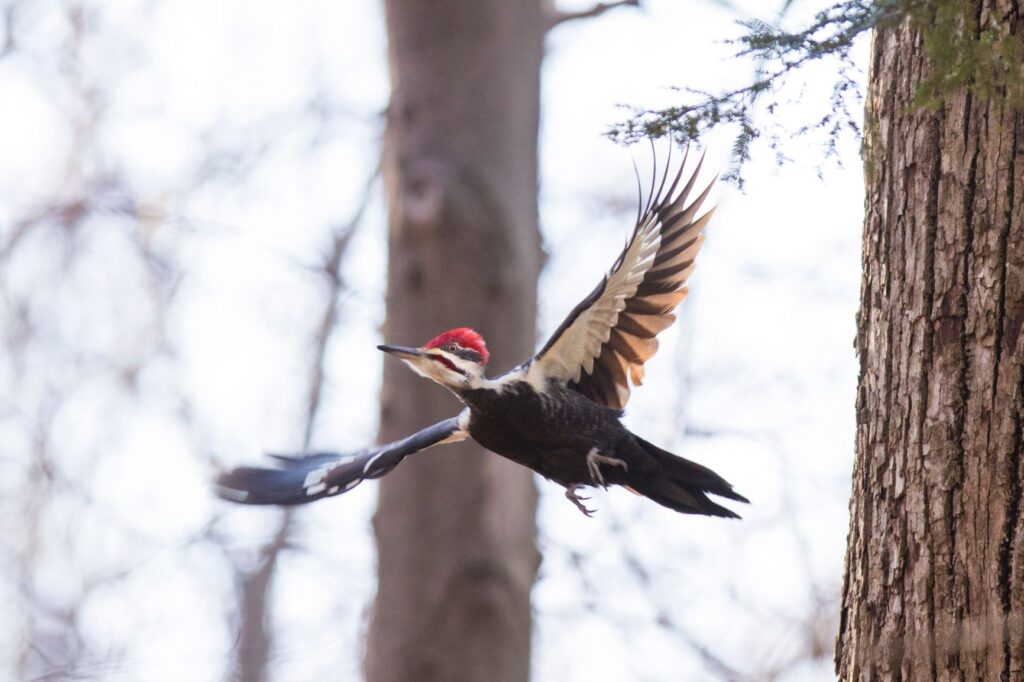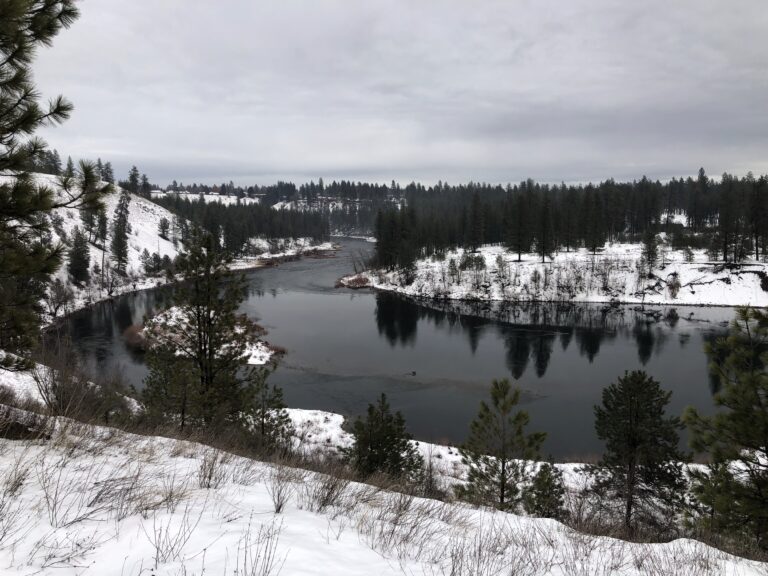If you spend enough time in natural areas you will probably have a chance encounter with wildlife, where you share an intimate moment in the life of that species. I recently had an impactful meet up, or near literal impact, with the largest woodpecker in North America. While skiing along a cat track at Mt. Spokane, I disturbed a pileated woodpecker off its tree. It emerged inches from my face and proceeded to fly about five feet in front of me for a few hundred feet. I got an up-close view of its iconic red Mohawk and white striped head and could watch the distinctive flight of a few strong wing beats followed by a glide.
With the probable extinction of the ivory bill woodpecker in the Southeast, the pileated is the largest of the woodpeckers in North America, similar in size to crows. They have a distinctive “mocking laughter” call reminiscent of the cartoon character Woody the Woodpecker. The name pileated actually refers to the red crest that runs along its head. Males can be distinguished from females by a red mustache stripe behind their beaks.
Woodpeckers use their powerful beaks to hammer holes in trees in search of insects, and the drumming noise also stakes out their territory. Pileated woodpeckers will bore deep into the truck of a tree in search of carpenter ants and beetle larvae, their holes differing from other woodpeckers by their rectangle shape. They will excavate cavities in dead standing trees called snags that are big enough to lay eggs and rear young. When the pileateds move out other animals such as squirrels, owls, and ducks use these cavities, making some of these snags apartments for numerous animals.

It is easy to wonder how these birds don’t end up rattling their brains with all that pounding. Recent studies have found that these birds can transfer up to 99% of the pecking force away from the head and into the body. Studying these birds has even helped in research to reduce head trauma in humans.
Many woodpeckers also have incredible long tongues with sticky bards that help them rake ants and insects out of crevices in the trees. Sometimes these tongues are so long that the muscle wraps around the outside of the skull and terminates in a nostril. Pileateds, however, have relatively short tongues. This is partly because their powerful beaks can penetrate deeper into a tree than many other woodpeckers.
Watching a woodpecker fly from tree to tree it is easy to be amazed how they can land directly on the vertical surface of a tree trunk. Woodpeckers use their strong stiff tail feathers like a kickstand that allows them to stand on vertical trunks while they hammer away in search of food.
Pileated woodpeckers range across a large territory east of the Rockies to the north and south, but west of the Rockies they are found mostly in mature northern forests. Their presence indicates a healthy forest habitat with a mix of mature and standing dead trees with little human disturbance.
In many western Native American tribes the presence of a woodpecker is a sign of friendship and happiness. Certainly for me it truly was a happy experience to be gliding through the woods on skis at the same speed as my new, winged pileated friend.
Originally published as “Close Encounter of the Pileated Kind” in the March-April 2021 issue.













